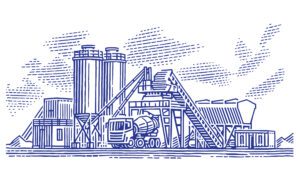What Is the Cost of Quality in Manufacturing?
At the end of the day, nothing is more important than customer satisfaction. And it’s inextricably linked to product quality. Keeping customers happy and loyal to your brand isn’t as easy as it sounds. There are a number of factors that affect a customer’s experience, from maintaining proper packaging to product quality. The production of high quality products is arguably one of the most important parts of the process, but it comes at a cost.
Quality is defined as providing products or services that customers need, that are free from defects, deficiencies and significant variations. Quality is achieved through strict and consistent commitment to certain standards to ensure uniformity, in order to meet customers’ needs.
According to a recent IndustryWeek article, 53 percent of consumers rate quality as the most important factor in purchasing decisions. As consumers’ demands and expectations have risen over time, quality has become an absolute requirement, regardless of where products are manufactured, distributed or sold.
The Cost of Poor Quality
The cost incurred from having a low quality product can be significant. Adopting a proactive approach where defects are detected ahead of time should be the ultimate goal. However, the reality is that many companies address quality issues only after a negative event has already occurred.
In cases where there has been quality mismanagement, that can certainly be a catalyst for positive change. But, it often comes at the cost of lives lost, recalls, loss of market share, ecosystems destroyed and organizations that suffer reputational and financial damage – due to design and manufacturing flaws. At that point, repair and replacement costs are pretty much unavoidable.
Poor quality can lead to:
- Product recalls: Large recalls are a nightmare for companies. Beyond trying to rectify the situation and the legal expenses incurred, there are also costs to rework manufacturing processes and reputational damage. In 2016, Samsung recalled all Galaxy Note7 mobile phones after reports that the batteries were overheating and catching fire. 2.5 million units were recalled and Samsung lost approximately $5.3 billion.
- Defects: In 2016, Toyota recalled 3.37 million vehicles related to fuel tank and airbag defects. Defective products can be a significant expense to companies if they aren’t identified early on in the manufacturing process. Rework, redesign and retesting are all costly and time-consuming, but can be minimized when quality measures and procedures are put into place across the supply chain.
- Loss of customer loyalty: In a consumer-driven world saturated with choice, quality is no longer a differentiator – it’s simply expected. Even the slightest deviation from the baseline can result in customers abandoning your product or business. According to a recent Forbes article, loyal customers are five times more likely to purchase again and four times more likely to refer a friend to the company
- Damage to brand reputation: A happy customer means a repeat customer. An unhappy customer will take their business elsewhere and often leave a negative review (online or through word-of-mouth), damaging your company’s reputation. It takes years to build a strong brand, but customer loyalty and corporate brand reputation can be fragile. Johnson & Johnson’s recall of Tylenol and its other drugstore products has cost the company over $650 million in lost revenue, loss of market share to competitors, and an immeasurable hit to its brand reputation

Download our “How Connected Work Improves Quality Management in Manufacturing”eBook to learn more about how to improve adherence to quality standard operating procedures, increase collaboration and transparency and for continuous quality improvement across the supply chain.
Barriers to Achieving Quality
Even though quality touches all aspects of an organization, too often the idea of quality isn’t taken seriously enough. Teams struggle with metrics, fragmented technology, real-time insights and ad hoc tools and processes. And despite advancements in technology, many companies still maintain obsolete quality approaches. Here are a few common issues companies face:
- Standard operating procedures (SOPs) and work instructions that are not accurately captured or updated.
- Companies rely too heavily on verbal communication or tacit knowledge.
- Many procedures are still paper based.
- Companies misunderstand what to document, how to document or why to document procedures.
- Overcontrol of processes leads to over-documentation and unnecessary sign offs.
For all these reasons (and more), companies need to be more vigilant than ever about maintaining quality. How can manufacturers achieve higher levels of quality and product compliance?
Connected Worker Technology Can Drive Quality Improvements
Technology can help your organization both in terms of work quality and end-product quality by making activities more consistent, collaborative and transparent. A connected worker platform tracks every element of every job, and can alert management if there are significant variations from SOPs or within the product itself.
With connected worker technology, you now have access to more data. That means, your company can capture more data at every step along the way of the manufacturing process. This will not only allow your team to make better decisions related to quality, but they can quickly and effectively respond to trends and quality issues.
Download our new eBook, “How Connected Work Improves Quality Management in Manufacturing,” to learn more.






